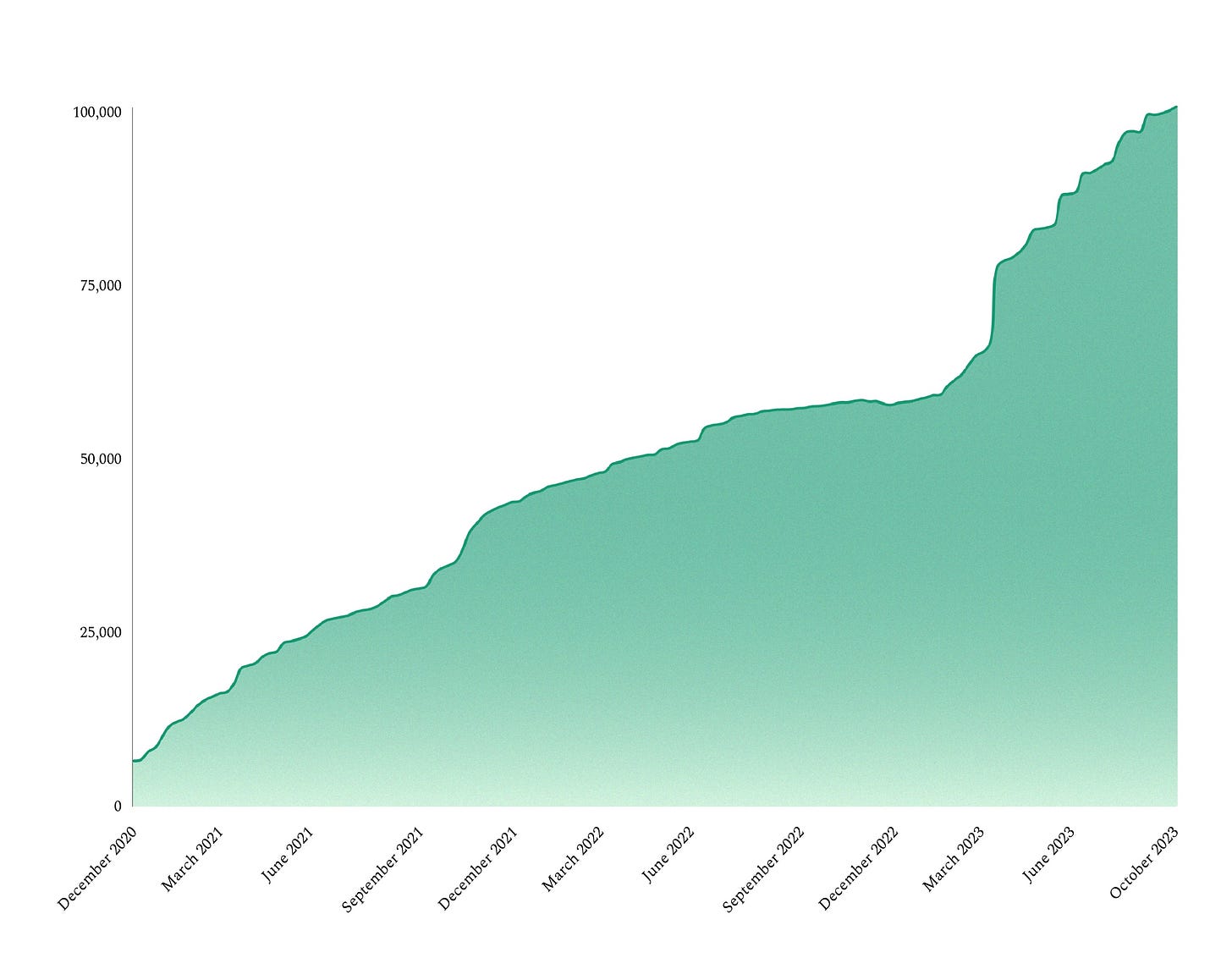One Hundred Thousand
The hard-earned advice I would give to myself before starting The Generalist.
Brought to you by Sandhill
IPO season returns.
Recent IPOs from companies like Instacart, Klaviyo, and Arm have opened the door to more startups going public in the coming months.
Sandhill Markets opens up access for accredited individuals to invest in these institutional Pre-IPO deals like Stripe, Anthropic, Databricks and Epic Games.

